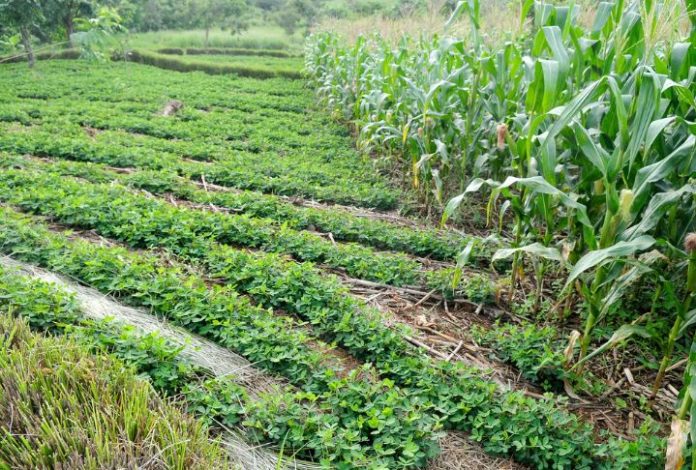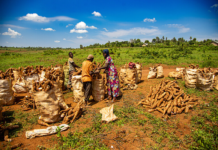Africa Development Bank funded US$14.4 million concessional loan planned for disbursement for agriculture and aqua-culture sector development has added impetus to Zambia’s quest to diversify and redeem the economy with plans to promote farming blocks.
Last July, the AfDB’s board of directors gave consent for Zambia to access to its concessional window dubbed: “Building today, a better Africa tomorrow” of a staggering a $14.4 million loan for food security, amid heightening desire to use natural and human resources to bolster the sector and sustain its reliability as southern Africa’s regional bread basket.
The funding, expected to start being utilized this year, anchored in the African Development Bank Group’s African Emergency Food Production Facility will provide, among other facilitations, the country’s certified seeds and fertilizer to 45,000 emergent farmers, a move the Government has applauded.
The provision will be done using the innovation and ICT platforms through existing private sector-based distribution channels. Women and youths will receive 50%-subsidized seeds through an electronic platform that enhances transparency, accountability and sustainability.
Under the financing facility, the project will promote proven climate-smart agricultural practices employed by the Bank’s Technologies for African Agricultural Transformation Initiative (TAAT). Another outcome will be the implementation of agriculture and trade policy reforms.
Additionally, farmers are expected to receive 36,000 metric tons of fertilizer and 3,000 metric tons of improved seeds, as part of the expected outcomes. Further, farm gate fertilizer prices will be reduced by 50%. Majority beneficiaries will be women and youth who lack financial capacity to sustain the business.
A partial credit guarantee scheme will result in over 100,000 metric tons of fertilizer on the local market and stabilize prices. Over 90,000 hectares of maize and soya will be planted, with an incremental annual output of 265,000 metric tons valued at $43.72 million.
This will reduce potential food imports by 200,000 metric tons. The average farm income will rise from $350 to $500 per year. Zambia, one of the countries affected by the high fertiliser cost imported spurred by the Russia-Ukraine conflict, coupled with inflationary impact across various sectors.
Agriculture minister Reuben Mtolo told FRA, the assistance was a stimulant to the Government’s quest to use agriculture and aquaculture sectors as the country’s economic revival lines and meet national obligations amid increased donor interest to financing the National Agriculture Investment Plan (NAIP).
“……this is the beginning of the revolution of the agriculture sector, given the goodwill from the donor community and we hope to invest in irrigation, animal disease control and support to the small holder farmers, many that need farming inputs to reverse the losses incurred last season”
Minister Mtolo notes that with the planned promotion and establishment of farming blocks, the funding from AfDB and other donors will assist drive the revival of the agriculture and aquaculture sectors and that financing would be spread to all the 10 provinces of the country.
According to the Agriculture Productivity and Market Enhancement Project (APMEP) program, financed by the Global Agriculture and Food Security Program (GAFSP), a Financial Intermediary Fund hosted within the World Bank Group, the funds will go towards technical assistance to farmers in various aspects.
Recently, GAFSP had extended $31.13 million in grant funds Zambia for APMEP, while at the time African Development Bank disbursed the money and provided technical expertise.
Under APMEP, Zambia will expect to develop irrigation schemes, intensify agricultural mechanization, promote conservation agriculture, crop diversification, and enhanced aquaculture and livestock development in Zambia.
This is part of an integrated agriculture value chain development under the Ministry of Agriculture. The project contributes to economic growth and poverty reduction by enhancing food security, incomes, and nutrition among participating households.
According to the Bank’s Director of Agriculture and Agro-Industry Martin Fregene; “GAFSP has provided farmers with ways to improve their livelihoods and created employment, especially for vulnerable people like women and youth in rural areas.”
Zambia lost 25% of the grain produced during the 2022 farming season, dropping to 2.7 million metric tons, 600, 000 less than produced a year earlier. The low output is despite increasing demand for maize from neighbors, hard hit by drought and climatic change effects.
To grow agriculture, Zambia’s finance minister Situmbeko Musokotwane incentivized the sector during the 2022 national budget to help transform the agriculture sector into an agro-export industry and attract investments in farm blocks.
Government proposed to promote large-scale estate production for both domestic and export markets.
It will provide necessary infrastructure in farm blocks for them to be operational. The incentives will promote agro-processing and exports, and more investors will be willing to invest in the farm blocks.
Government in collaboration with the World Bank seeks to help service the farm blocks. This will motivate players in the agriculture sector to produce finished agricultural products for export, farm blocks being effective vehicles for economic growth.
“We need to attract investors who will establish mango, banana and sugar plantations to make finished agricultural products” he told lawmakers on 29 October.









Climate change remains the greatest monister that needs consented efforts and increased funding.
[…] source […]
Comments are closed.